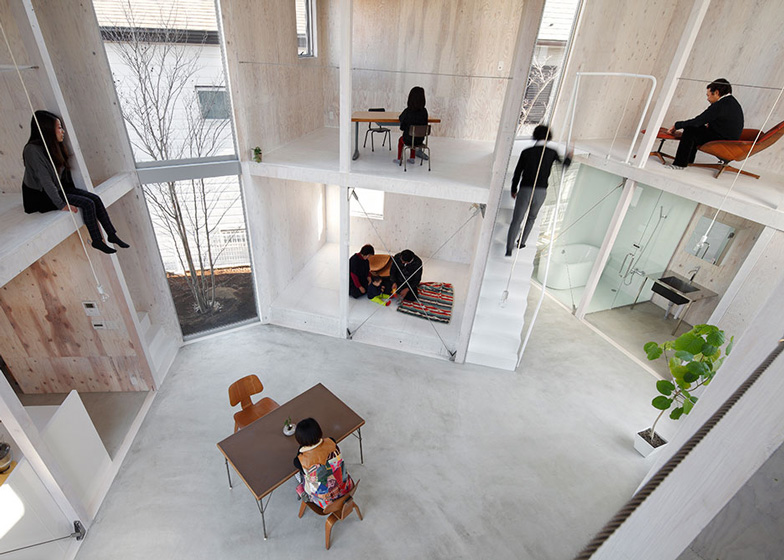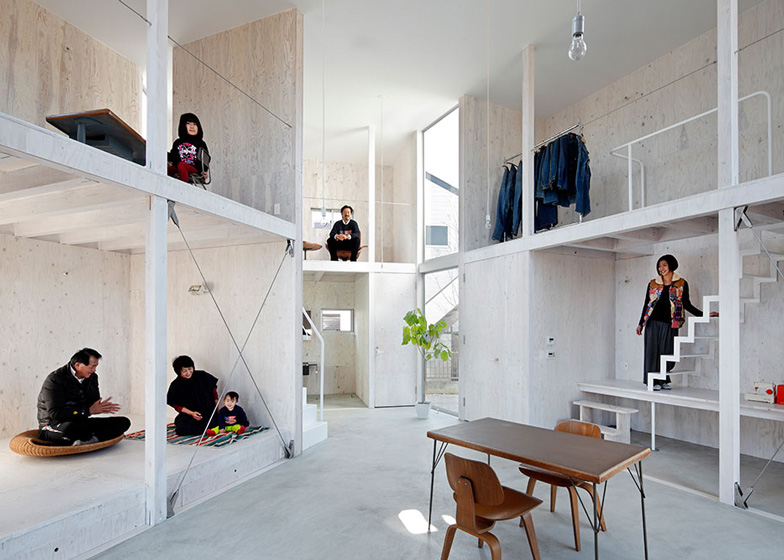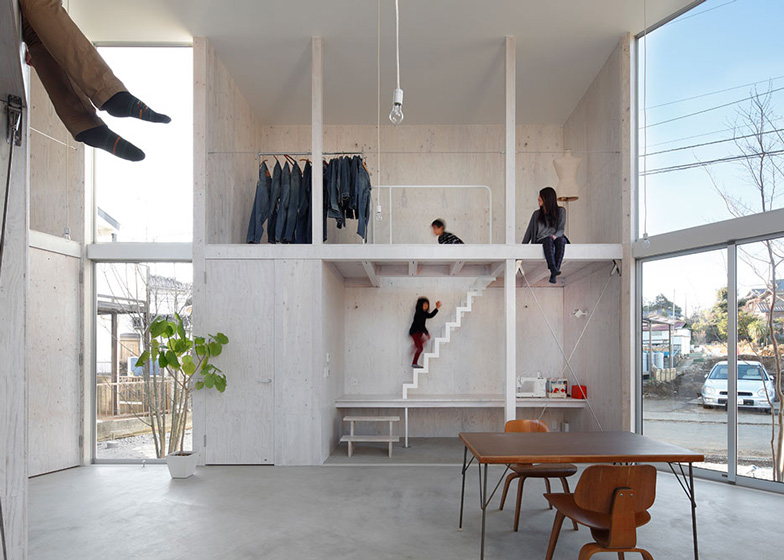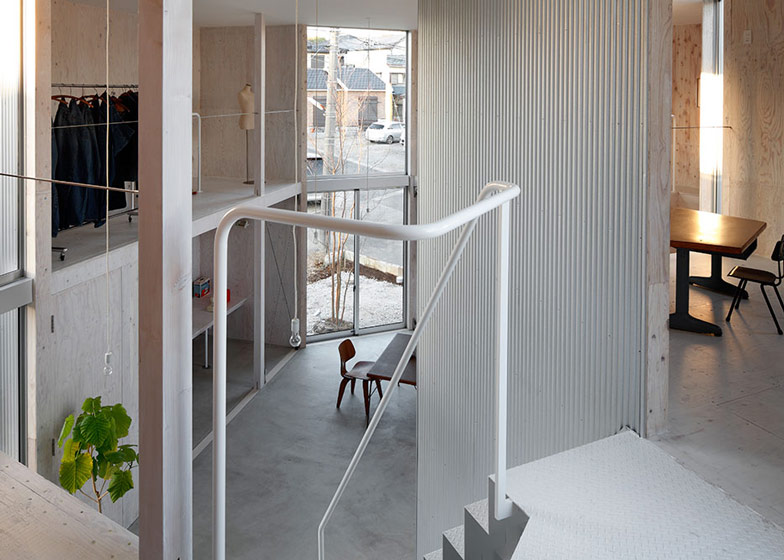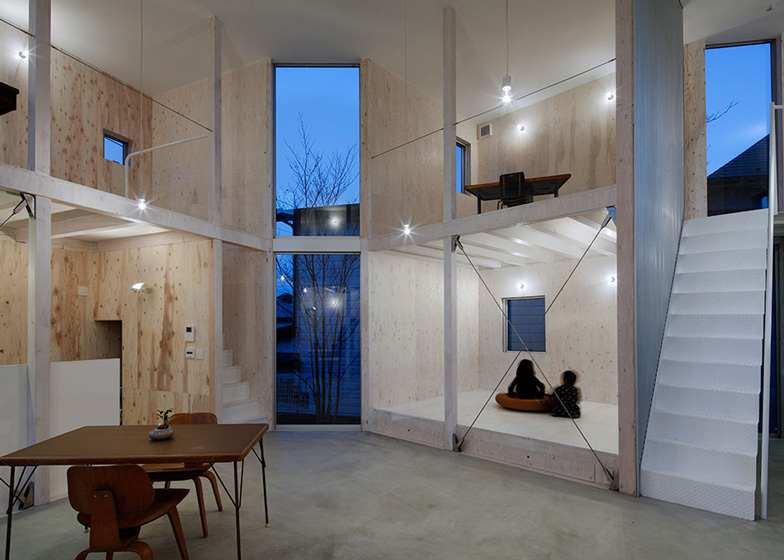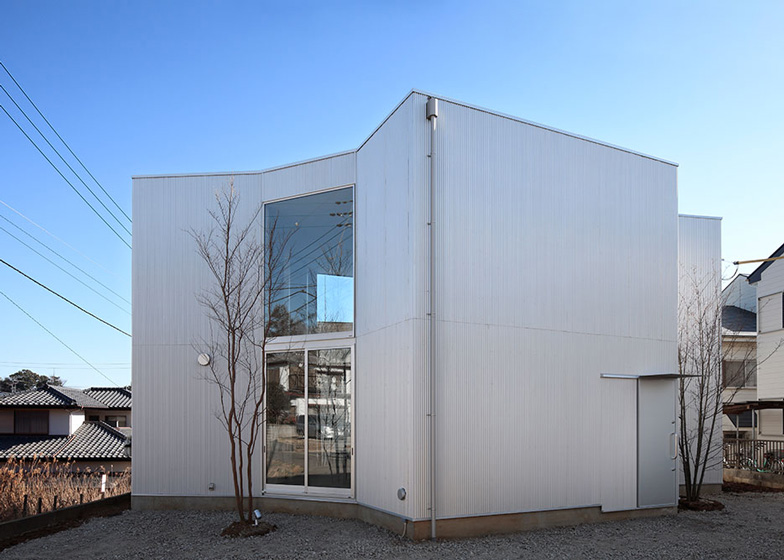There are barely any partitions between the rooms of this family house in Chiba Prefecture, Japan, which was designed by architect Yamazaki Kentaro as an open container that "changes as you design and live in it" (+ slideshow).
House in Kashiwa, also known as the Unfinished House, provides a flexible residence for a growing family. Japanese architect Yamazaki Kentaro wanted the building to feature several multi-purpose spaces to accommodate the occupants' "future possibilities".
The house's layout is shaped by four two-storey boxes, surrounding a generous double-height atrium that functions as the family's living and dining room. While the lower levels of the boxes accommodate typical rooms, the upper levels can be used for different activities.
"The second layer has intentionally been left blank so the areas can create space suitable for their increasing hobbies, or wardrobes or a children's room," explained Kentaro.
The arrangement of the boxes was determined by the views of the surroundings. "I positioned the angle of the central space and boxes so that from all windows the view is of trees or the sky, not the neighbouring house or their windows," added the architect.
The exterior of the house is clad with corrugated steel, but inside the walls are lined with bare plywood that are accompanied by wooden columns, creating a blank canvas that residents can personalise with their own possessions.
Three separate staircases lead up to the first-floor rooms and are each made from white powder-coated steel.
The kitchen is located inside one of the boxes and forms the house's entrance. This space offers a view across most of the interior, ensuring parents can keep an eye on their children.
The bathroom is tucked away on one side and is surrounded by glass, affording little privacy.
Photography is by Naoomi Kurozumi Architectural Photographic Office.
Here's a project description from Yamazaki Kentaro:
House in Kashiwa/Unfinished House
A "container" that changes as you design and live in it, and design it, on top of the challenge of living in such a house, must continue to give you the pleasure of living there. Clothes, kitchen goods and other things related to their hobbies can be freely placed, and their living space can be filled with things that promote enjoyment and happiness in their lives. During the design stage, a new addition to their family arrived to add to the enjoyment of their home.
Without defining or limiting the future possibilities of this family, we designed a house that allows for flexibility within their daily lives, such as hobbies and family.
The construction of the building is made by forming four boxes, each box divided into two layers around a central space which acts as the hub of the home in which the family gathers. The first layer of each box functions as the kitchen, bedroom, plumbing area, and work space. The second layer has intentionally been left blank so the areas can create space suitable for their increasing hobbies, or wardrobes or a children's room. Particularly the children's room should be left up to the child to design.
Each space meets the minimum size required for the designated function, such as the kitchen and bathroom, by 910 modules. They act as not rooms but function spaces and the central hub is an open ceiling space where the four boxes, each with a function contributing to their daily lives are gathered around this central space. Without limiting it to 910 modules, I positioned the angle of the central space and boxes so that from all windows the view is of trees or the sky, not the neighbouring house or their windows. Also the angle between the kitchen and adjacent boxes on both layers allows a clear view from the kitchen to the box, especially in the event that the box is used as a children's room.
This house, born of long, fruitful discussions with the client creates a space where I hope the family and the building itself can grow close together.
Location: Masuo, Kashiwa-shi, Chiba Prefecture
Principle use: residential
Story: 2 storeys
Building area: 70.32 sqm
Total floor area: 107.63 sqm
Structure: timber
Major interior and exterior structure: exterior galbarium interior plywood OSCL
Structural design: ASD /Ryuji Tabata, Takayuki Tabata

